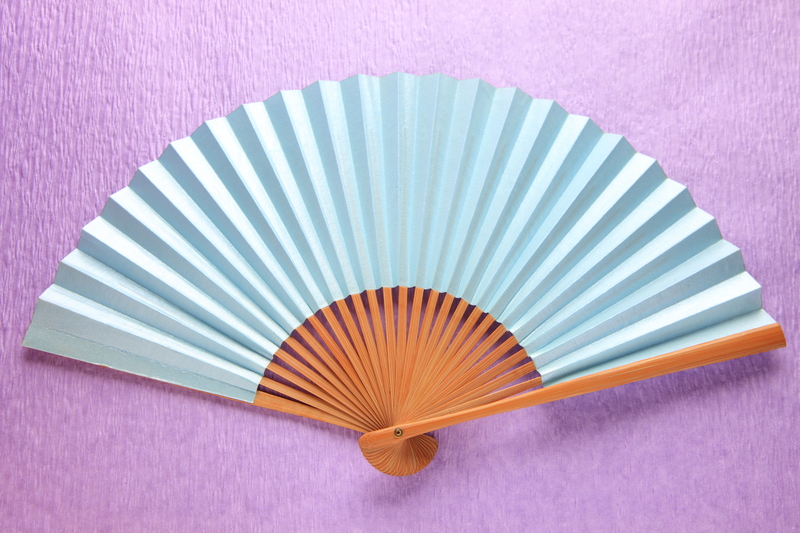Recycling Pots and Pans: Reducing Waste in Your Kitchen
Kitchen waste is a growing concern for modern households aiming for sustainability. One of the most overlooked contributors to this waste is old or damaged cookware. If you have a collection of pots and pans gathering dust, it's time to reevaluate how you dispose of them. Recycling pots and pans offers a practical solution for reducing waste in your kitchen and promoting a greener lifestyle.
Why Recycling Cookware Matters
Every year, millions of tons of metal waste end up in landfills, with a significant portion originating from kitchens. Disposing of old cookware irresponsibly not only contributes to the landfill problem but also wastes valuable resources that can be recovered and reused. Pots and pans are typically made from materials like aluminum, stainless steel, copper, and cast iron--all highly recyclable metals.
- Reduces landfill waste
- Conserves natural resources
- Lowers your home's carbon footprint
- Encourages a sustainable lifestyle
Recycling pots and pans is more than just an environmentally friendly choice--it's a responsible decision that can inspire others in your community to follow suit.

Understanding What You Can Recycle
Not every pot or pan can go straight into your curbside recycling bin, but that doesn't mean they have to end up in a landfill. Understanding what makes your cookware recyclable is the first step in responsible disposal.
Materials Commonly Found in Cookware
- Aluminum – Lightweight, commonly used in non-stick pans
- Stainless Steel – Durable and rust-resistant, popular in professional-grade cookware
- Copper – Excellent heat conductor, often found in high-end pots
- Cast Iron – Hefty and long-lasting, can be recycled almost indefinitely
- Non-stick Coatings (Teflon, Ceramic) – May require special handling in recycling
- Glass and Enamel – Often found as coatings, can be recycled with specific processes
What about the handles? Many handles are made from plastic, wood, or silicone. These materials often need to be separated from the metal base before recycling.
Tools Needed to Prepare Cookware for Recycling
- Screwdriver - to remove handles
- Pliers - for stubborn attachments
- Cleaning supplies - to remove food residue and oils
Thoroughly cleaning and preparing your old cookware makes the recycling process more efficient and ensures it can be properly processed at recycling facilities.
How to Recycle Pots and Pans Properly
Step 1: Determine If Cookware Is Still Usable
Before jumping to recycling, assess the condition of your pots and pans. Is it possible for someone else to use them, even if you can't? Consider donating gently used cookware to:
- Local charities
- Thrift stores
- Homeless shelters
- Community kitchens
Tip: Many charities gratefully accept usable cookware, helping to reduce kitchen waste through reuse.
Step 2: Find Your Local Scrap Metal Yard
If your pots and pans are no longer usable, your best bet is usually a local scrap metal facility. Most municipal curbside recycling programs do not accept pots and pans due to the thickness of the metal and potential non-metal components. Search online for "scrap metal yard near me" or check your municipality's recycling website for guidance.
- Call ahead to confirm which items they'll accept
- Ask about mixed materials (i.e., metal with plastic handles)
- Prepare items by removing as much non-metal as possible
Step 3: Remove Non-Metal Components
For efficient recycling, separate metal from other materials. Handles, knobs, and lids made from plastic or wood should be detached. If you can't remove non-metal pieces, inform the recycling center so they can advise on best practices.
Step 4: Clean Thoroughly
Any stuck-on grease or food can hamper the recycling process. Scrub pots and pans clean before taking them to the scrap metal yard. Copper and aluminum should shine so they're easily identified and graded.
Step 5: Deliver to Recyclers
- Transport items safely to the recycling facility
- Follow the facility's instructions for sorting
- Ask about receiving compensation--many scrap metal yards pay for metal items
Recycling cookware is an easy way to contribute positively to the environment and, in some cases, your wallet!
Alternatives to Recycling: Maximizing Kitchen Sustainability
Even if your old pots and pans have served their culinary purpose, they're not necessarily finished! There are numerous innovative ways to reuse and repurpose cookware around your home and garden.
Creative Repurposing Ideas
- Planters: Drill holes in the base and use as unique containers for flowers or herbs
- Bird baths: Cast iron pans make sturdy bird baths for the backyard
- Storage: Use deep pots to store kitchen utensils, tools, or even art supplies
- Decor: Copper and aluminum cookware can become eye-catching wall hangings or outdoor ornaments
- Serving trays: Clean, flat pans make rustic serving trays for parties
Upcycling gives old cookware new life, reduces environmental impact, and adds personality to your home.
Donating for Nonprofit or Educational Use
Schools, art programs, and community gardens often seek old pots and pans for projects and teaching activities. Contact local organizations to see if your cookware can serve a secondary purpose before recycling.
Challenges in Recycling Pots and Pans
Composite and Non-stick Materials
Non-stick coatings--such as Teflon--can be hazardous if not handled properly. Most recycling facilities do not accept non-stick cookware unless the coating is removed. Specialized recycling centers may accept these items; research local options or inquire with manufacturers about take-back programs.
Mixed-material Cookware
Cookware made from multiple materials (e.g., metal bases with glass lids or plastic handles) often requires disassembly before recycling. If you cannot separate the materials, facilities may be unable to process them, or the entire item could be rejected.
Electrical Cookware
If you're disposing of electric pots, pans, or multi-cookers, they are considered e-waste and require specific handling. Search for e-waste recycling events or facilities that process electronic kitchen gadgets.
Sustainable Kitchen Habits: Beyond Recycling
Recycling your pots and pans is just one of many steps toward a more sustainable home. To truly minimize waste and environmental impact, consider these best practices:
- Purchase high-quality cookware that lasts longer, reducing replacement frequency
- Avoid non-stick variants when possible and choose recycled metal options
- Practice repair before disposal--tighten handles and refinish surfaces when feasible
- Minimize overall kitchen waste by composting, upcycling, and mindful purchasing
When sustainability informs your shopping and disposal decisions, you reduce not just kitchen waste, but your household's total environmental footprint.
Frequently Asked Questions About Pots and Pans Recycling
Can I put old pots and pans in my curbside recycling bin?
Usually, no. Most curbside programs aren't equipped to handle thick metals or items with mixed materials. Instead, use scrap metal recycling facilities.
Can pots and pans with non-stick coatings be recycled?
Usually not in standard recycling centers. Non-stick surfaces, especially Teflon, require special processing and may only be accepted by select facilities.
What if I can't remove the handles?
It's best to try, but if you can't, call ahead to your scrap yard or recycling facility for advice. Some locations may still accept the cookware, but may deduct any compensation for the non-metal parts.
Is there a benefit to recycling vs. throwing old cookware in the trash?
Absolutely! Recycling recovers valuable resources, reduces landfill waste, and conserves energy compared to manufacturing new products. Throwing cookware in the trash wastes these materials and pollutes the environment.
Should I clean my pots and pans before recycling?
Yes, always remove grease and food residue to ensure the metal can be recycled efficiently.
How Manufacturers Are Supporting Recyclable Cookware
Some cookware manufacturers now feature take-back programs or use recycled metals in their products. Brands like GreenPan and All-Clad are introducing eco-friendly initiatives and encourage consumers to recycle old cookware responsibly. When shopping, look for:
- Products labeled as recyclable
- Brands with sustainability certifications
- Take-back or product stewardship programs
Your buying choices support a circular economy, where resources are reused, and waste is minimized.

Recycling Pots and Pans: Key Steps to Reducing Kitchen Waste
Reducing kitchen waste starts with small, conscious choices. Recycling, reusing, or repurposing old pots and pans not only prevents valuable resources from being lost but also inspires friends and family to adopt sustainable habits. Remember:
- Assess if the cookware can be donated or reused
- Remove non-metal elements and clean thoroughly
- Bring metal cookware to a reputable scrap metal facility
- Explore creative upcycling around the home or garden
- Purchase sustainable cookware in the future
Every pot and pan you recycle keeps waste out of landfills, conserves resources, and supports a greener planet. By joining the movement to recycle pots and pans, you make a significant impact--one meal, one kitchen, one community at a time.
Conclusion: Your Role in a More Sustainable Kitchen
It's easy to disregard old cookware as junk, but they hold hidden value in their recyclable materials. By understanding the right way to recycle pots and pans, you take an active role in reducing your kitchen waste and cultivating an environmentally responsible lifestyle.
Let your efforts inspire others. Share your recycling journey, upcycling projects, or donations on social media and within your neighborhood. Every recycled pot or pan is a step closer to a greener, cleaner future for us all.
Start small, recycle smart, and make sustainability a permanent ingredient in your kitchen!